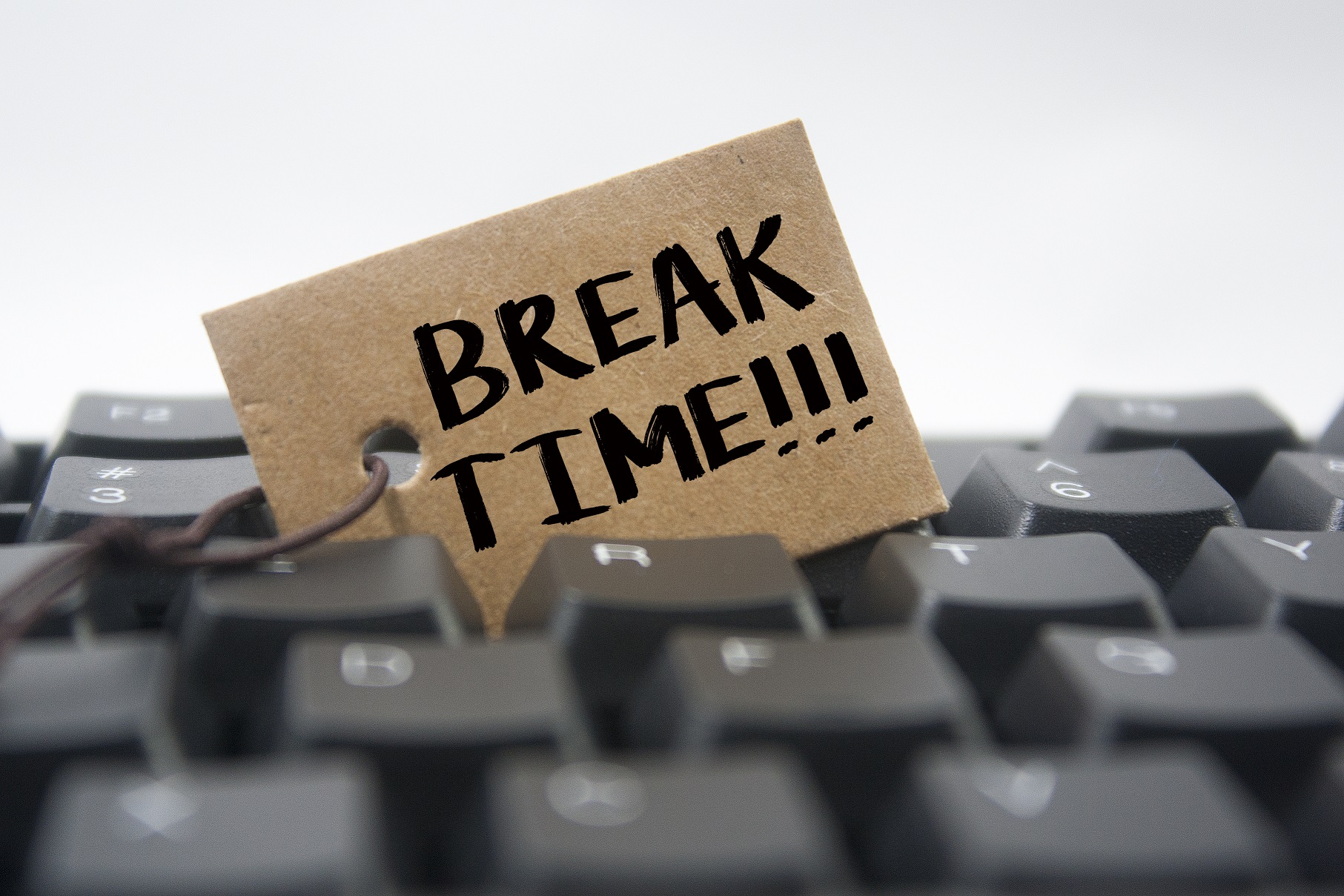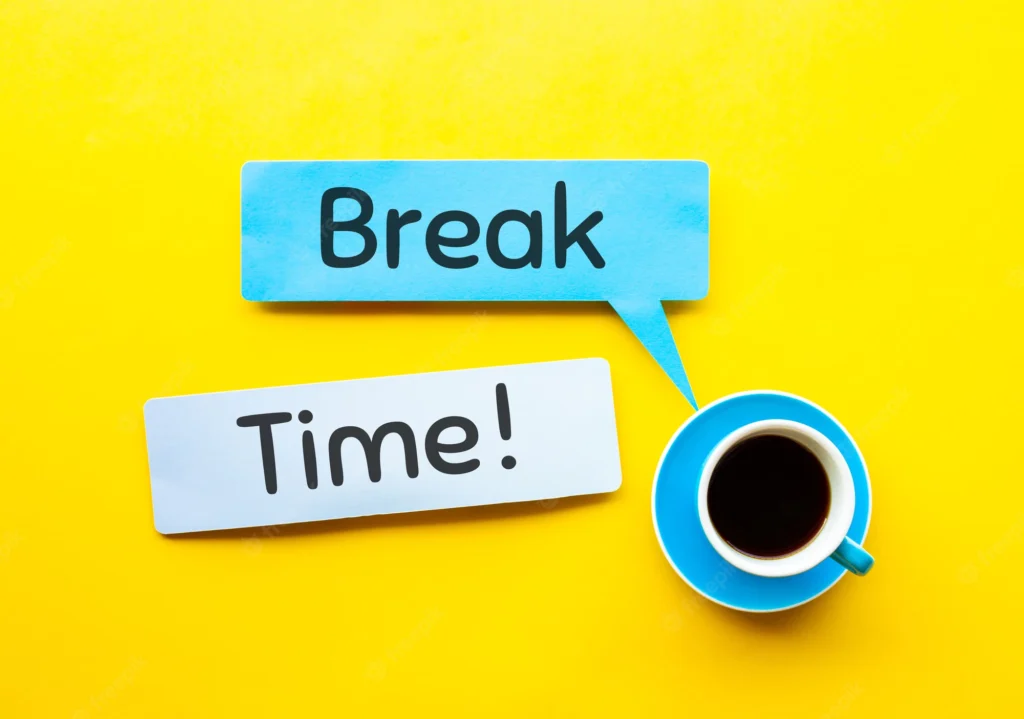Break This Habit - Your Guide To Lasting Change
Have you ever felt caught in a loop, doing something you wish you wouldn't, even when you promise yourself you'll stop? It's a common feeling, that quiet wish to do things differently, to step away from a routine that no longer serves you. We often tell ourselves, "I swear it every time, I'll break this habit," but then, when we try, we sometimes feel like we miss something, a certain familiar comfort that makes it hard to let go.
This feeling, this push and pull, is a very real part of how we are. It's not about being weak or lacking resolve; it's just how our brains are wired to create routines. We're all just trying to be better versions of ourselves, to live in ways that bring more good into our days. And sometimes, that means letting go of old ways of doing things that perhaps aren't helping us anymore, even if they feel a bit like an old friend.
So, if you've been wondering how to make a real shift, how to truly step away from a way of acting that you'd rather not keep, you're in the right spot. We'll talk about how these patterns get started, why they can feel so stubborn, and, most importantly, some simple ways you can begin to loosen their hold. It's about making a positive change that lasts, really.
- Lauren Daigle In Christ Alone
- Is Married To Medicine Coming Back
- Nate Burlesons Net Worth
- Nipsey Hussle Daughter Now
- Khloe Kardashians Ex Husband
Table of Contents
- Why is it tough to break this habit?
- How do we even get these habits?
- What can you do to break this habit?
- Can you really change your brain to break this habit?
- How long does it usually take to break this habit?
- Steps to truly break this habit
- A few more ways to break this habit
- Making new, better ways of doing things stick
Why is it tough to break this habit?
You know, it's actually quite common to find it a bit of a challenge to stop doing something you've done for a while. One big reason this happens is a simple lack of knowing or accepting what's really going on. Sometimes, we're just not fully aware of the routine itself, or we might not quite accept that it's something we genuinely need to change. This can make it really hard to even begin the process of making a shift, since the first step is often seeing things clearly. It's almost like trying to find your way in the dark without a light, you know?
Another part of the struggle comes from how our minds work. Our minds are very efficient, and they like to make shortcuts for things we do often. These shortcuts become automatic, so much so that we might not even think about them when they happen. So, when you try to interrupt one of these deeply set patterns, your mind, in a way, resists because it's used to doing things a certain way. It's not trying to make things hard for you; it's just following its usual programming. That, in some respects, is why it feels like such an uphill walk sometimes.
Plus, many of these behaviors give us some sort of feeling or outcome that we've come to expect. It could be a brief moment of comfort, a distraction, or even just a familiar rhythm. When we try to remove that behavior, we're also removing that expected feeling, and that can leave a sort of empty space. This absence can feel a little strange, or even uncomfortable, and our minds naturally want to fill that void. This makes it harder to truly break this habit, as our system is looking for that familiar payoff.
- Premiere Hunger Games
- Cuando Saldra La Segunda Temporada De Hells Paradise
- Shaving Products For Women
- Does My Dog Know I Take Care Of Him
- Drake Biracial
How do we even get these habits?
Our daily routines, the good ones and the ones we wish to change, actually form in a pretty straightforward way. It starts with a signal, something that tells our mind it's time to do a particular action. This signal could be a time of day, a certain feeling, or even a specific place. Then comes the action itself, the thing we do. And finally, there's a reward, some kind of benefit or satisfaction that we get from doing the action. This reward tells our mind that this routine is worthwhile and should be repeated. It's a bit like a loop, you know, signal, action, reward, over and over.
Over time, as this loop repeats, the connection between the signal, the action, and the reward gets stronger and stronger in our brains. It becomes less of a choice and more of an automatic response. This is why, when you try to break this habit, it can feel so ingrained. It's not just something you do; it's something your brain has learned to do almost without thinking. This process, actually, is how both helpful and unhelpful patterns get set in our lives. So, it's really about understanding this loop.
It's interesting to note that these routines don't always form because we consciously want them. Sometimes, they just happen as we go about our days, giving us a quick fix or a moment of relief. For example, you might grab a certain snack every time you feel a bit bored, and pretty soon, the feeling of boredom becomes a signal for that snack. The snack gives you a brief moment of distraction, which acts as the reward. So, it's more or less an unconscious learning process, which is why figuring out how to break this habit often means looking at what's happening underneath the surface.
What can you do to break this habit?
To really make a change, the first step is often to recognize the pattern you're trying to shift. This means paying close attention to what sets it off, what are its triggers. Is it a certain time? A particular feeling? A specific place or person? When you start to see these signals clearly, you gain a bit of an edge. You're no longer just reacting; you're observing. That, you know, is a very important first step.
After you've got a sense of the triggers, try to figure out why you started this routine in the first place. What purpose did it serve? What did it give you? Maybe it was a way to relax, or to cope with stress, or just something to do when you felt bored. Understanding the underlying reason can help you find a different way to meet that same need. It's about getting to the core of it, really.
Once you know the pattern and its purpose, the next big step is to replace the old behavior with a better alternative. This isn't about just stopping something; it's about finding a healthier, more positive way to get that same reward or meet that same need. For example, if you used to eat popcorn every time you went to the movies, and you want to break this habit, you could try bringing a different, healthier snack. Or, if the routine was about unwinding, you could replace it with a calming activity like reading or listening to music. The idea is to swap out the old for something new that serves you better, which is actually quite effective.
Can you really change your brain to break this habit?
The good news is, yes, you absolutely can make changes to your brain's ways of doing things. Our brains are incredibly adaptable, a quality scientists call plasticity. This means that the connections in your brain, the ones that create these automatic routines, are not set in stone. They can be reshaped, and new connections can be formed. So, when you work on developing new, helpful behaviors, you are literally rewiring your brain. It's a pretty amazing thing, actually, how much our minds can adjust and learn new pathways.
It's not just about trying harder or having more willpower, though those things certainly help. It's more about working with how your brain naturally learns and adapts. By consistently choosing different actions when faced with old triggers, you begin to weaken the old connections and strengthen new ones. This takes a bit of time and persistence, of course, but the potential for real, lasting change is definitely there. You are, in a way, teaching your brain a new dance, which is pretty cool.
So, when people talk about breaking a toxic habit, they're often talking about this process of brain reshaping. It involves knowing what sets you off, figuring out why you do what you do, and then replacing those less helpful actions with things that are better for you. It's a powerful idea, that you have the capacity to guide your own brain's development in this way. You know, it's really about taking charge of your own patterns.
How long does it usually take to break this habit?
The time it takes to truly break a way of acting, especially an unhealthy one, can be different for everyone. There isn't one magic number that applies to all people or all routines. Some people might find a shift happens relatively quickly, while for others, it might take a bit longer. It depends on a few things, like how long you've had the routine, how strong the triggers are, and how much you practice the new ways of doing things. It's not a race, you see, but a process that unfolds at its own pace.
To make this process smoother, it helps to have a good sense of what's going on in your own head. Knowing why you truly want to make a change is a very strong motivator. When you have a clear reason, something that really matters to you, it gives you a steady purpose to keep going, even when things feel a bit tough. This inner drive, basically, is a huge part of what helps you stick with it.
And here's a really important point: accept that there will likely be some bumps along the way. It's very rare for someone to make a big change without any slip-ups. You might find yourself falling back into the old routine sometimes, and that's perfectly okay. What matters is how you respond to those moments. See them as learning opportunities, not as failures. Just pick yourself up, remember your reason for changing, and keep moving forward. This acceptance, actually, makes the whole journey much more manageable and helps you truly break this habit.
Steps to truly break this habit
Breaking away from an old routine can be thought of as a simple journey with a few main parts. While some say it can be broken down into many small steps, the core idea is to understand the cycle and then interrupt it with something new. The first part is all about becoming aware. This means figuring out exactly what you do, when you do it, and what prompts you to do it. It's like becoming a detective of your own daily patterns, which is pretty useful.
Once you have a clear picture of what sets off your routine and what kind of satisfaction you get from it, you can start to make a plan. This plan involves swapping out the old action for something different. The key here, according to some ideas from brain science, is not to try and just stop the old routine dead in its tracks. Instead, it's often more effective to replace it with something else. It's a bit like changing a train track rather than just putting up a barrier. So, you know, it's about redirection.
For example, if you find yourself reaching for a sugary snack every afternoon when you feel a dip in energy, the trigger is the afternoon slump, and the reward is a quick energy boost. Instead of just trying to say "no" to the snack, you could plan to take a short walk, drink a glass of water, or have a piece of fruit instead. This way, you're still addressing the energy dip, but with a more helpful action. This makes it easier to truly break this habit.
A few more ways to break this habit
When you're trying to let go of an old way of doing things, you have a few practical choices. One option is to simply tell yourself "no" each time the old signal appears. For instance, if you always get popcorn at the movies, you could decide firmly, "no popcorn this time." This takes a good deal of mental strength, of course, especially at first, but it can be a direct approach. It's about building that internal muscle, you see.
Another approach is to completely avoid the situations or places that trigger the unwanted routine. If going to the movies always leads to popcorn, you might choose not to go for a while, or to go at times when the snack bar isn't open. This can be a very effective way to break the cycle, especially in the early stages, as it removes the temptation altogether. It's a bit like taking a different road to avoid traffic, more or less.
Or, as we talked about, you can replace the old action with something new and better. Using the popcorn example, instead of avoiding the movies or just saying no, you could bring a healthier snack from home, like some fruit or a small bag of nuts. This provides a different reward system, one that supports your goals. This way, you're still enjoying the movie experience, but you're doing it in a way that helps you break this habit. This is often seen as a very sustainable method.
Making new, better ways of doing things stick
Old ways of acting can be stubborn, and new ones can feel a bit hard to get going. But with some simple steps, you can develop new, helpful behaviors that truly stay with you. It's about understanding that making lasting change isn't just about wishing for it; it involves a clear process. One helpful method is called "habit stacking," where you add a new desired action right after an existing, solid one. For example, if you always brush your teeth before bed, you could decide to do a minute of stretching right after. This links the new action to an old, established one, making it easier to remember and do. It’s pretty clever, really, how it uses what you already do.
Another key part of making new ways of doing things stick is to really know why you want to change. When your reasons are clear and important to you, it provides a powerful inner drive. This drive helps you keep going even when things get a little tricky or you feel like slipping back. It’s about connecting with your deeper desires for yourself, that, is that, a very strong motivator.
And remember, it's about progress, not perfection. There will be days when you might not follow your new plan perfectly, and that's absolutely fine. The important thing is to get back on track the next day. Every time you choose the new, helpful action, you are strengthening those new pathways in your brain. Over time, these new ways of doing things will start to feel just as natural and automatic as the old ones once did. You are, in a way, retraining your own mind to work for you, which is an amazing thing.
This article has covered how our routines form, why they can be tough to change, and practical ways to make a shift. We looked at recognizing triggers, understanding the underlying reasons for behaviors, and replacing old actions with new, more helpful ones. We also discussed how our brains can adapt and change, making lasting personal transformation possible. The piece also touched on how long it might take to make these shifts and the importance of accepting setbacks as part of the journey. Finally, we explored methods like "habit stacking" to help new, positive actions become a regular part of your life.
- Nicholas Hoult In Hunger Games
- Dee Spencer
- Lauren London Khloe Kardashian
- How Often Do People Get Their Nails Done
- Mcdonalds Cajun

How Effective Breaks at Work Increase Productivity | Work-Fit Blog

Is Holiday Pressure High? Science Suggests A Coffee Break And Then Do

Break